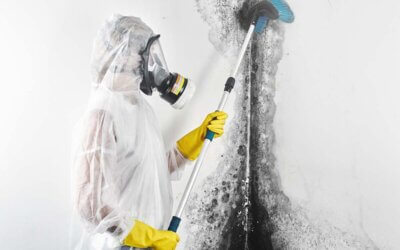How to prevent mould in your home
August 12, 2024Mould is common in New Zealand homes due to our damp environment and ageing properties. Here’s how you can prevent mould from growing in your home.
New Zealand homes are notorious for having mould.
In one survey, more than half (57%) of renters said that there was a problem with dampness or mould in their units. With our damp climate across the country and older properties, it can seem like a losing battle to keep it away.
However, there are measures you can take to try to avoid mould taking hold in your property, as well as things you can do to stop it from spreading.
How to prevent mould in your home
Firstly, it’s helpful to know exactly how mould thrives. It requires wet, damp areas to grow, and with those conditions, it can live on anything from the clothes in your closet to your walls, carpet, and furniture.
With that in mind, the best way to prevent mould from occurring is to keep all your internal living areas dry and warm.
Try these tips to minimise mould growth throughout your property:
- Turn those heaters up to keep spaces warm and dry
- Keep lids on pots when cooking in the kitchen
- Always turn on your extractor fan in the kitchen or bathroom when these areas are in use
- Try to avoid splashing water anywhere in the kitchen or bathroom
- If you do splash water anywhere, dry it with a cloth
- If you have a shower curtain, wash it regularly (once per month) to avoid mould spores from growing
- Open windows throughout the warmer months for fresh airflow
- Open windows temporarily in winter in the kitchen or bathroom to let hot, moist air escape
- Address any leaks in the home as soon as you discover them (there may be more water escaping in places you can’t see)
- Open the curtains around the house during the day to let sunlight in to warm the space
- Open wardrobe doors regularly to allow these spaces fresh air
- Keep beds and furniture at least a few inches from walls to allow better airflow around the bedding
- Use draught stoppers next to external doors to keep the cold air out in winter
- Never put wet shoes or clothes away in the wardrobe (make sure they are dry first)
- Don’t let clothes sit damp in the washer after they have been through the cycle
- Open the washing machine door or lid after a cycle to allow it to dry out
How to stop mould from spreading in your home
If you have noticed mould growing in your home, you can manage it and keep it from spreading further.
Firstly, follow all the steps listed above, paying special attention to areas where you have found the mould.
Next, you can clean away small patches of mould with white vinegar. However, remember that white vinegar is a bleaching agent, so avoid using it on areas that could discolour. If there is mould on painted walls, you can dilute the vinegar with water (50/50).
It is best to use a spray bottle to apply the vinegar to affected areas. Let it sit for a few days, then clean it (and the mould) away with soap, water, and a clean cloth. Be sure to carefully throw away the cloth afterwards, and use a fresh cloth to fully dry the area.
Expert mould removal
You can manage smaller patches of mould around the home with good cleaning and careful strategies to avoid further growth. However, if the mould is getting out of hand, spreading around, or threatening your wellbeing in any way, it might be time to call in the experts.
At PRO Environmental Services, one of our specialties is mould removal. We don’t just remove existing mould, but also work to identify and fix the source of the mould to ensure it doesn’t immediately grow back.
Contact us today to learn more about our mould removal services, and for a free, no-obligation quote.
Related articles from our blog
How do you know if you need expert mould removal?
You may need expert mould removal to ensure stubborn mould growth on your property. Here’s the difference an expert makes, and when you might need one.Mould is a persistent, serious problem for many New Zealand homes. Even with the implementation of the Healthy Homes...
The dangers of mould in New Zealand homes
Mould is common in NZ homes, but that doesn’t make it safe. Here’s what causes it, the dangers of mould can cause, and what you can do.

